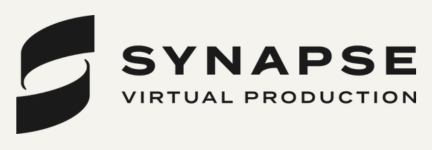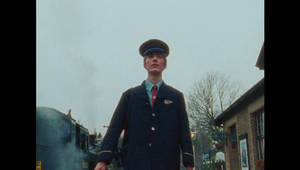
Cinematographers Behind the Camera: Annika Summerson

Having first picked up a camera at the age of 12, DoP Annika Summerson has had a passion for the craft since her early days growing up in Stockholm, Sweden. This month, her project Mogul Mowgli starring Riz Ahmed as a young British rapper battling with a crippling illness, has been selected to show at the British Film Institute London Film Festival (LFF).
In 2011, her graduation project ‘Until The River Runs Red’ won a BAFTA for Best Short Film and she has since gone on to many more award-winning projects, picking up UKMVAs, a FIPRESCI, an Honorary Mention for Outstanding Cinematography, and an Amanda (Norweigen BAFTA).
For Cinelab London’s series of Cinematographers Behind the Camera, LBB’s Sunna Coleman speaks to Annika about childhood influences, her favourite locations in the world, and saving baby seals in Cape Town.
Q> What was it like growing up in Stockholm and how did you first get into film? Were you always quite creative as a child?
Annika Summerson> Stockholm is a great place to grow up, it’s on the water and we’re not far from nature. I was a Cub Scout for many years and spent a lot of time in the wild, which to a certain extent prepared me for this job I believe. You learn to be proactive and think on the spot as well as working together with others.
My dad was an avid hobby photographer and the love for photography was passed on to his three kids - we’re all geeking out about cameras when we hang out back home. I thought I’d be a stills photographer when I was younger and toyed with the idea of doing it on the ski slopes or getting into action sports as I’ve been a snowboarder since I was little. But I ended up applying to do a BA in film and TV in Australia and within the first week of the course I knew I wanted to be the person behind the camera.
Q> What was your journey into the industry like from there?
Annika> During my course in Brisbane, Australia, I decided to transfer to London so I had two very different kinds of university experiences - both good, but different. In my third year I started working as a lighting trainee and then continued to spark on a variety of films and commercials which taught me a lot about lighting. Eventually I applied to the NFTS (National Film & Television School) and was very lucky to be accepted. It was a great place for me to experiment and make a lot of valuable mistakes.
Q> Your graduation project ‘Until The River Runs Red’ won a BAFTA for Best Short Film - what was it like to win such a prestigious award so early on?
Annika> It was quite overwhelming at the time, I was obviously very proud of it and what we achieved. It’s 10 years ago now but people who have seen it still comment on it which is really heartwarming.
Q> You’ve gone on to win many more awards since, what have been some of your most successful projects?
Annika> I shot a short film called Amasone in Norway which we won an Amanda for (the Norwegian version of a BAFTA) and another called Camping with Ada which I won a cinematography award for. I also made a music video many years ago with a total budget of £32 which ended up beating Duran Duran for an MVA. Proud moment!
Q> You work across a whole range of genres, is there a particular subject you find most appealing?
Annika> What I love the most about the industry is the variation between projects. One day you’re shooting a no-budget music video fuelled by passion and stale bread, and the next you’re doing high-end commercials with green smoothies and chauffeurs. I love the surprise element and the large variety of projects.
Q> When it comes to film vs digital, do you have a preference?
Annika> I love shooting film and whenever I get the chance to shoot it I fall in love with it all over again and swear never to shoot anything else. But then the ease of digital has its own advantages and less sleepless nights (and you’re not constantly counting how much stock you’ve used), so there are definitely pros to shoot digital as well. The texture of film and the way it handles highlights is something that I find hard to replicate on digital.
Q> Many cinematographers in this series have mentioned that the behaviour of cast and crew can change depending on whether you’re shooting film or digital - have you found this to be true?
Annika> This is definitely true, you have to be ready when you turn over on film. I never had a budget that allowed me to be wasteful with the stock in any way so the beautiful sound of the film rolling through the shutter definitely makes you sharpen up.
Q> Your work takes you worldwide, what are some of the most memorable places you have filmed in and why?
Annika> I love working in Norway, haven’t been back for a while but used to shoot there regularly. The landscape and the people are amazing and I’d love to go back soon. I also really enjoyed shooting underwater scenes with some cheeky seals in Cape Town with Director Stella Scott. The water was eight degrees celsius and I couldn’t feel my face but the sea was so forceful and beautiful. The divers we were with ended up rescuing some newborn seals and took them back to their parents because apparently they can’t swim until a certain age and if they get splashed off the cliffs by the waves they drown.
Q> What was it like to work with cinematography legend Christopher Doyle and what did you learn from him?
Annika> What I got from that shoot was the discipline he brought. He was always alert and never switched off, which made everyone else work really hard. It was a really low budget shoot but he didn’t seem to act any differently to any other shoot, from what I could tell. I jumped between operating, to helping with the lights, and back. (And of course I got some of his s16mm technical knowledge from that experience as well).
Q> How have you been keeping busy in lockdown? Did you get much time for passion projects or hobbies outside of cinematography?
Annika> I started doing some arts and crafts again which I haven’t had time to do for a very long time (I have always loved to create things with my hands since I was little) so spent a lot of time doing macramé wall-art that grew bigger and more complicated as lockdown went on. I was also knitting jumpers, which didn’t grow bigger, they stayed small and were given to friend’s babies in the end.
I also shot a little insert for the film Censor that Director Prano Bailey-Bond and I made with the BFI, Film4 and Film Wales last year. We have been collaborators since university and also lived together during lockdown so it was the perfect time to shoot a 1980s horror film with lots of blood being sprayed across our living room.. Point goes to whoever can identify the clip in the film when it gets released next year.
Q> How do you hope to develop your work in the coming years?
Annika> I think you develop on every job you’re doing. You learn from different situations and from the people you meet along the way. I’m currently shooting a TV series for Sky called Breeders and I’m having to evolve and stay creative everyday. My goal is to continue to work on bigger projects with people I feel creatively connected to, whether it be in TV drama, indie features, or commercials.
Q> What advice do you have for budding filmmakers?
Annika> Look at everything. Look at the light falling on objects around you, look at how the sun moves and what the results are, then try to figure out how to recreate it. Stay open and interested to all kinds of art forms. As cheesy as it sounds, make sure to feed your soul - whether it’s with paintings, nature, music or poetry.















